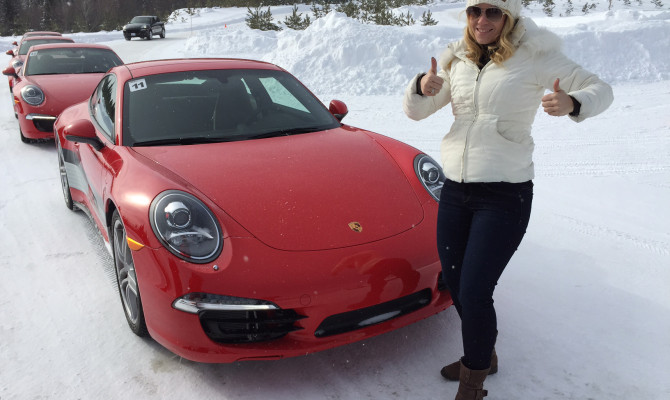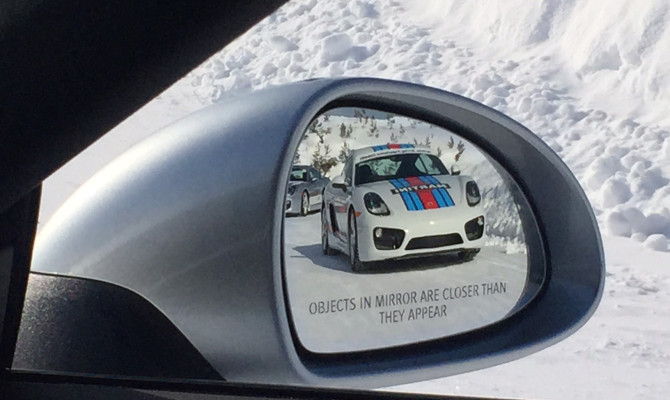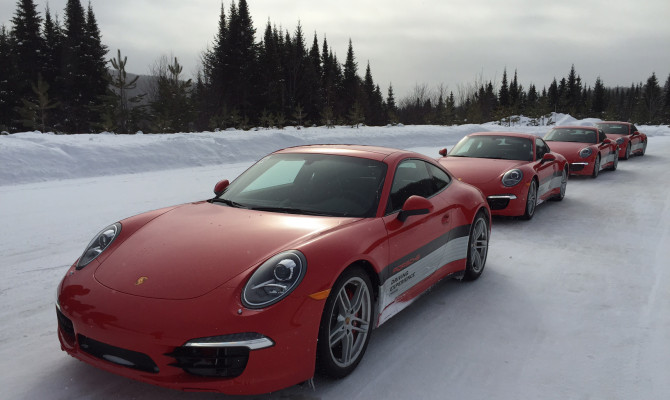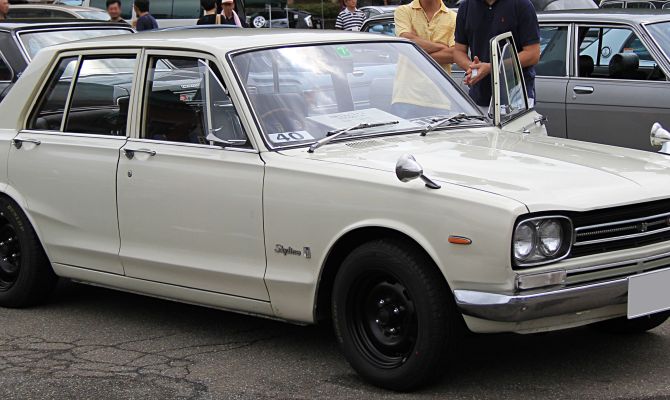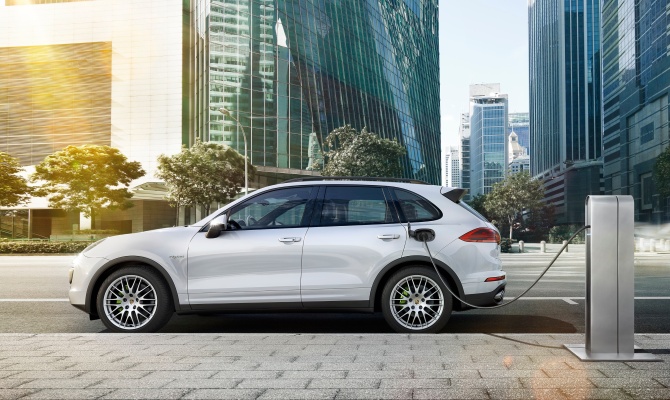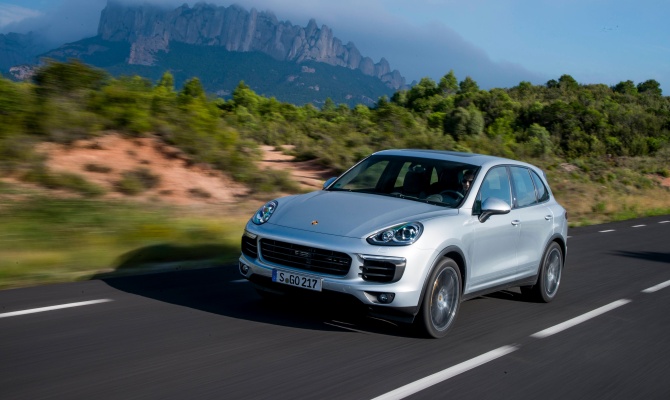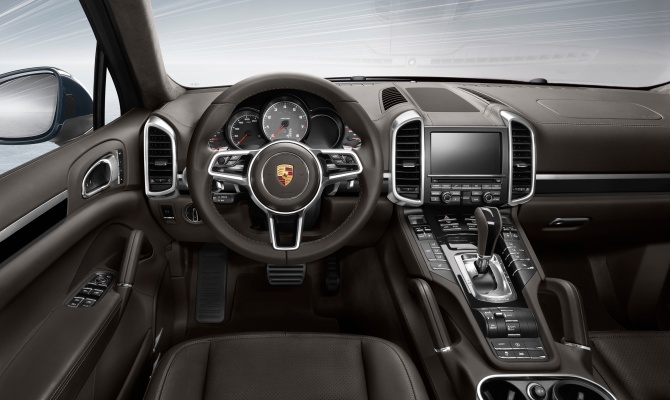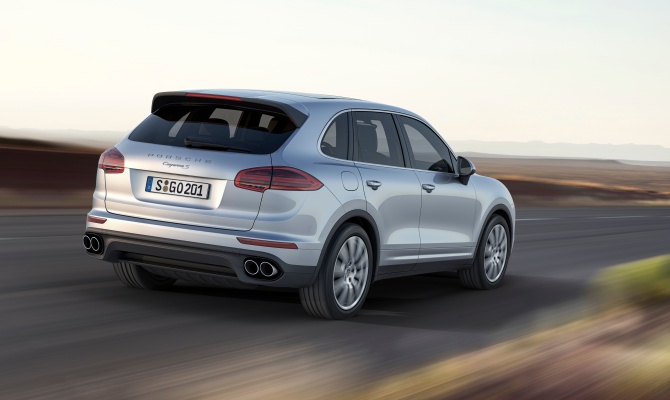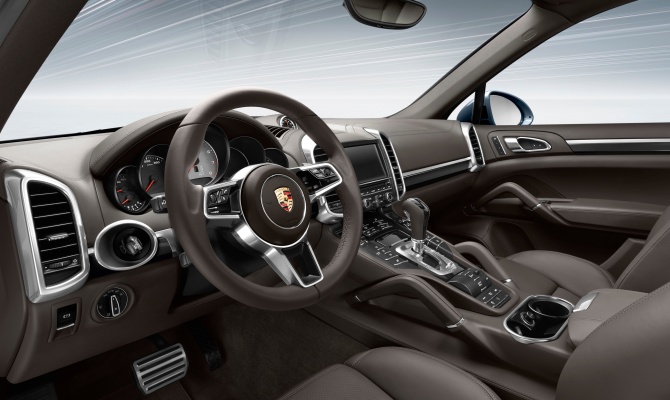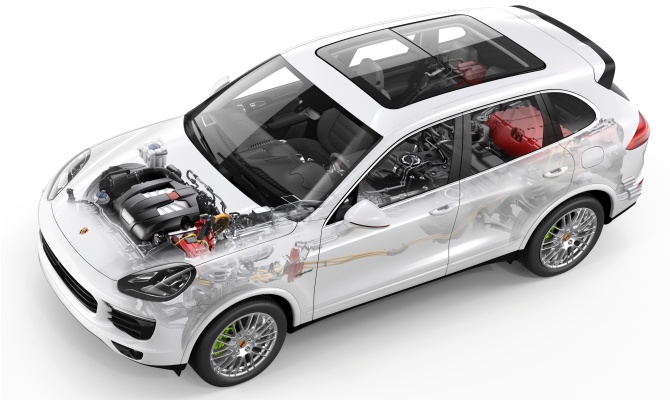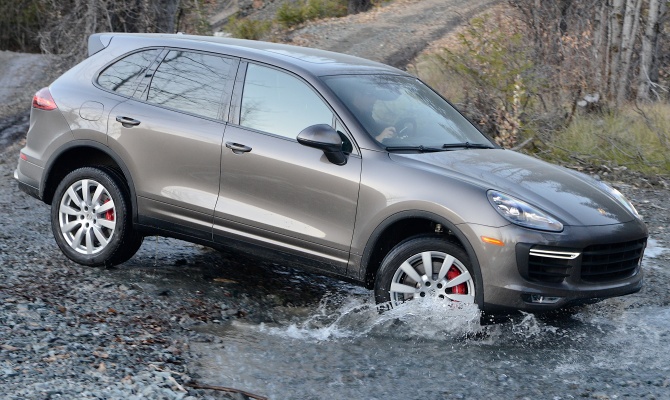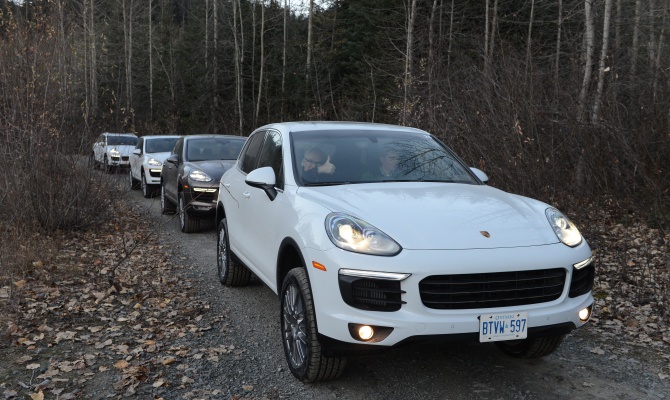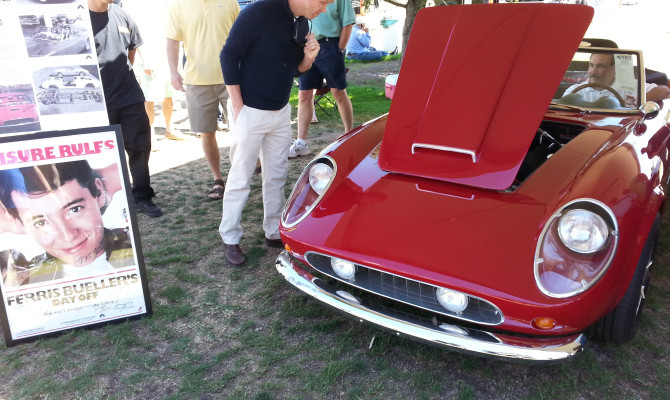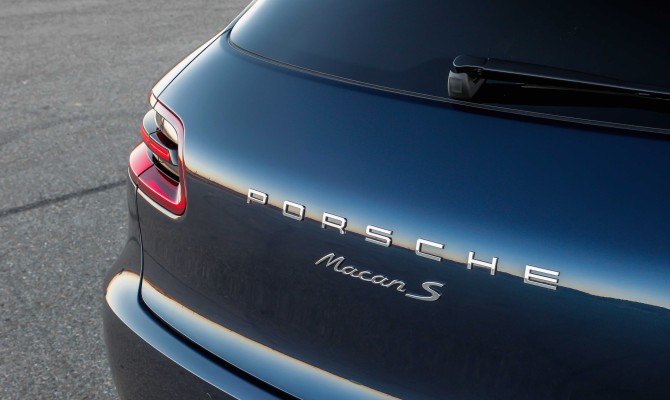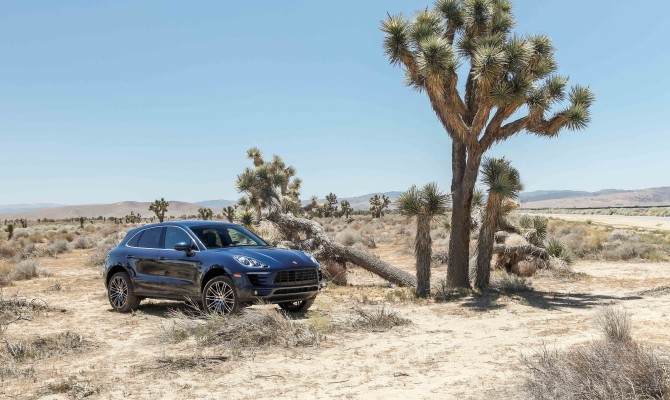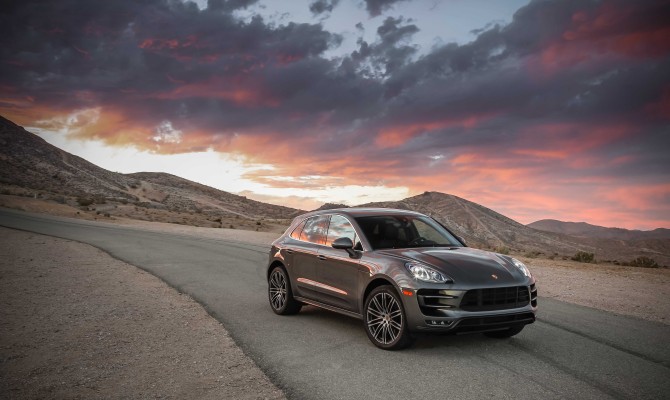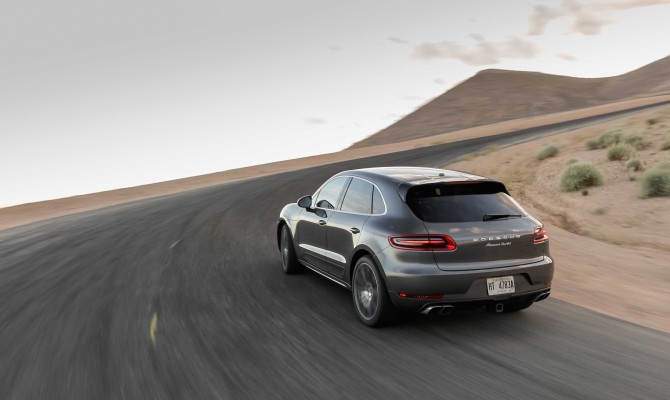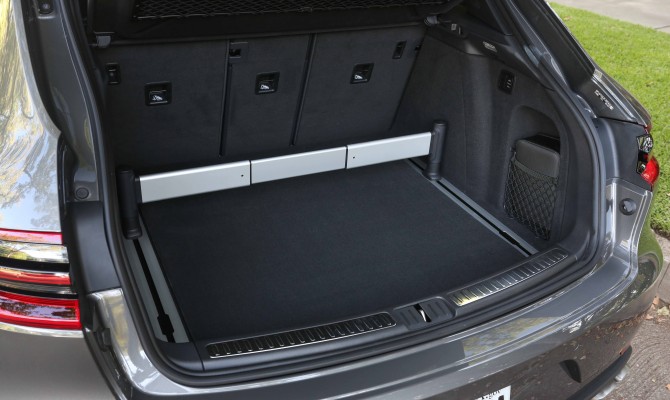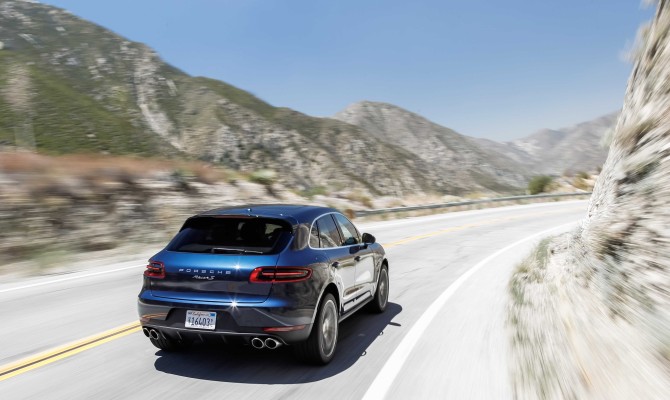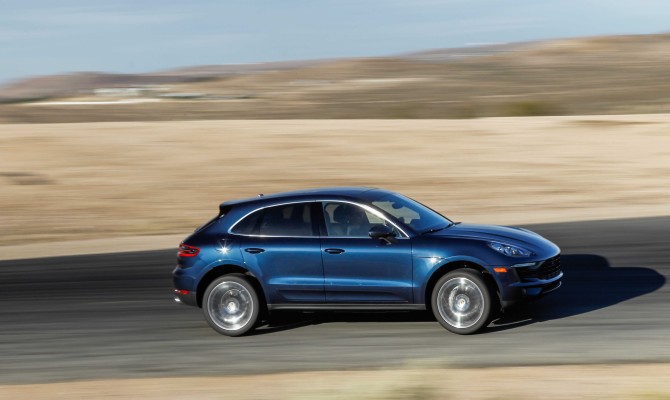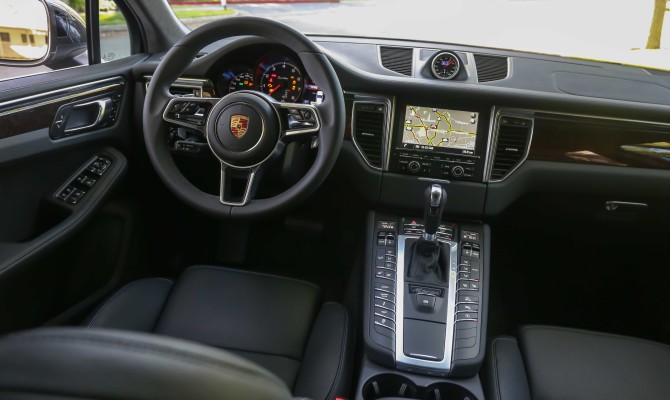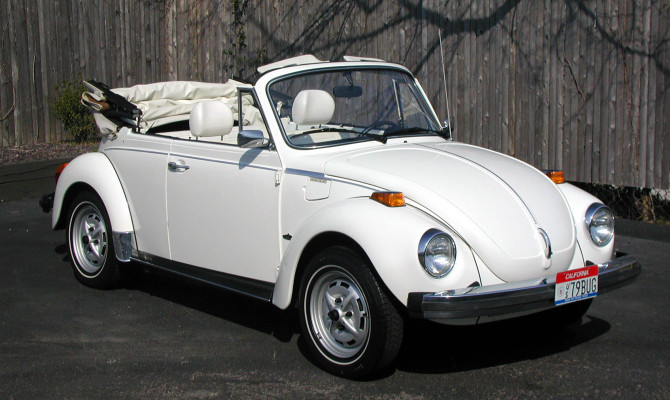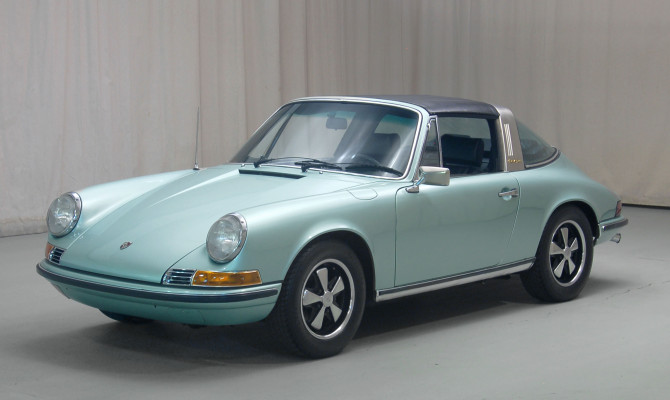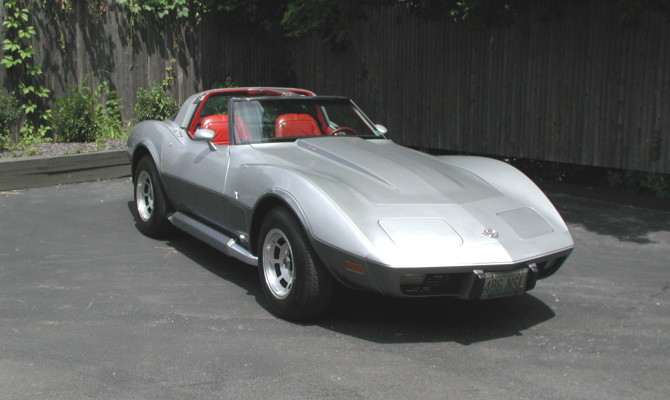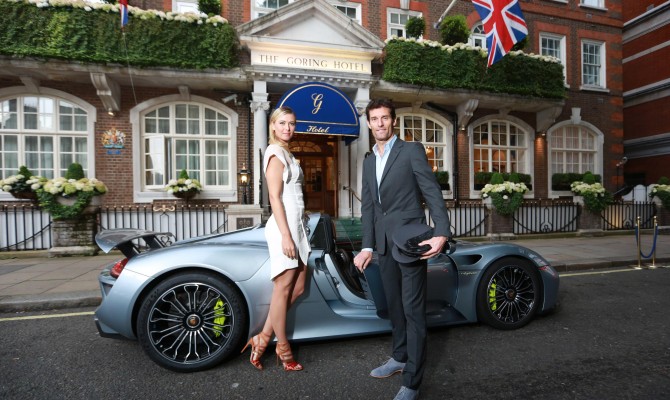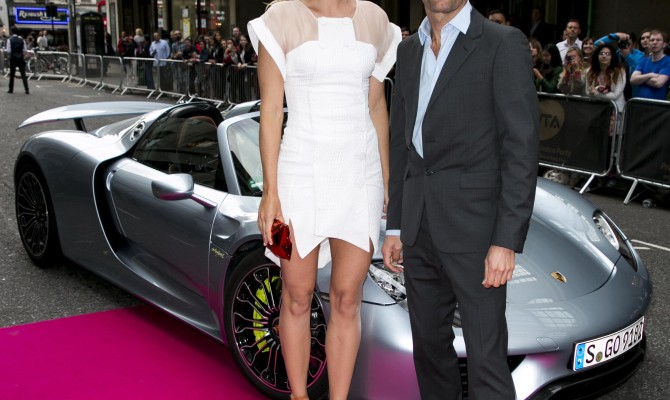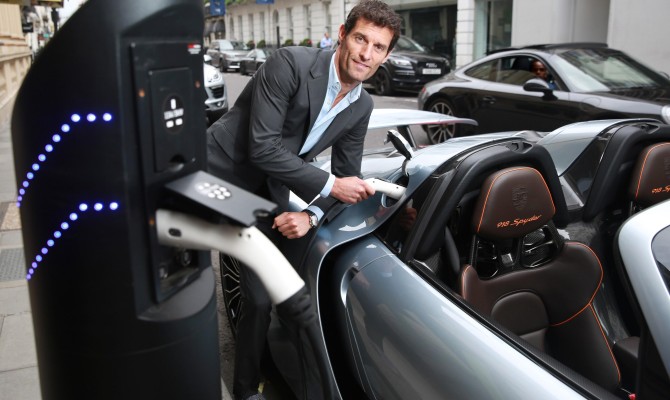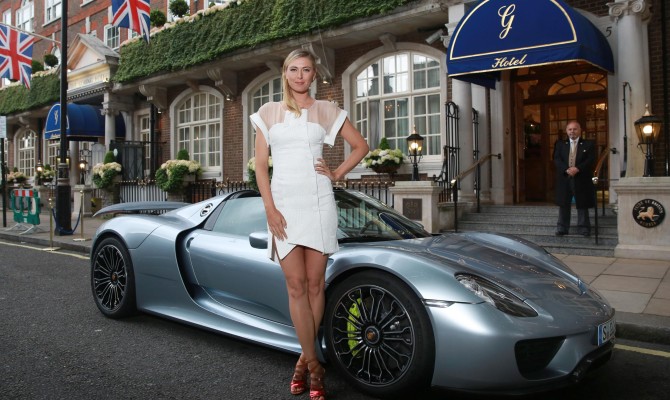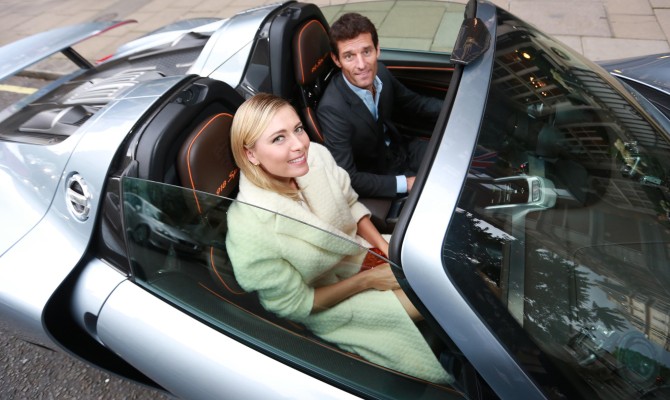by Grant Stoecker
“These five cars never made it to these shores while in production but they can be imported now under recent relaxation of import regulations…”
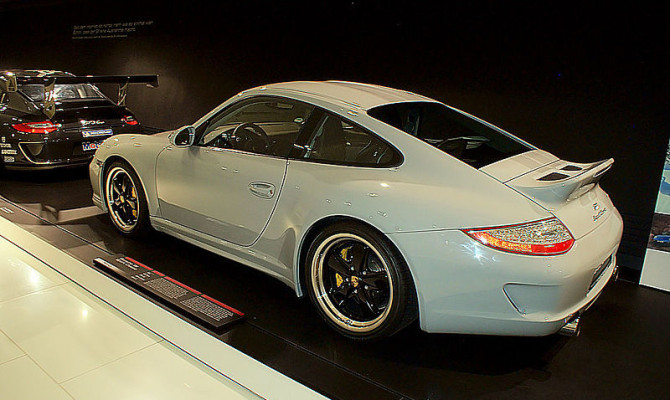
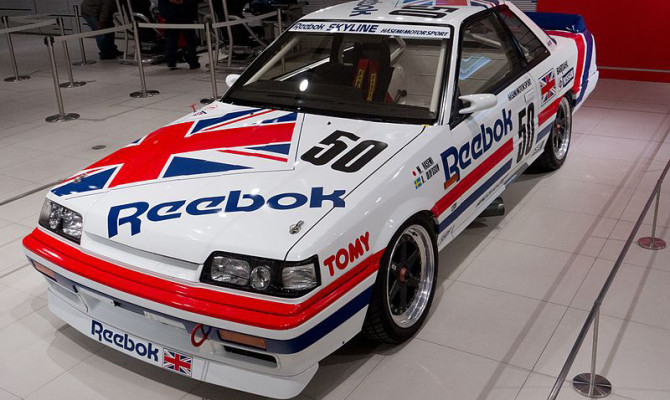
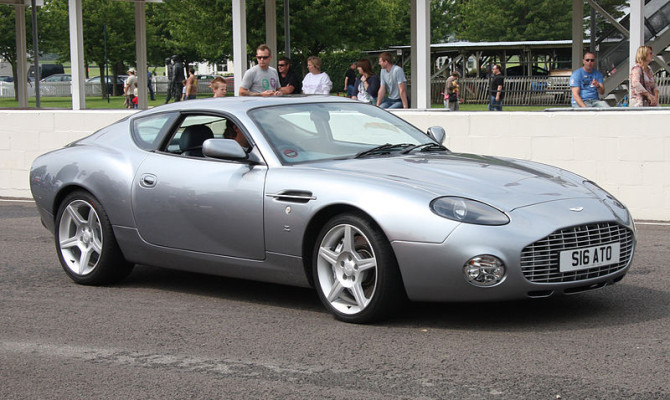
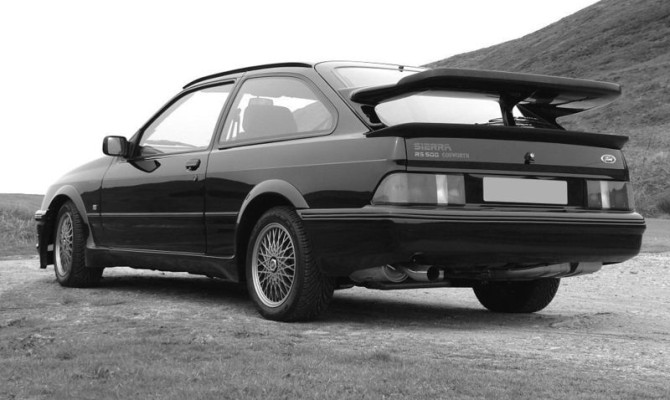
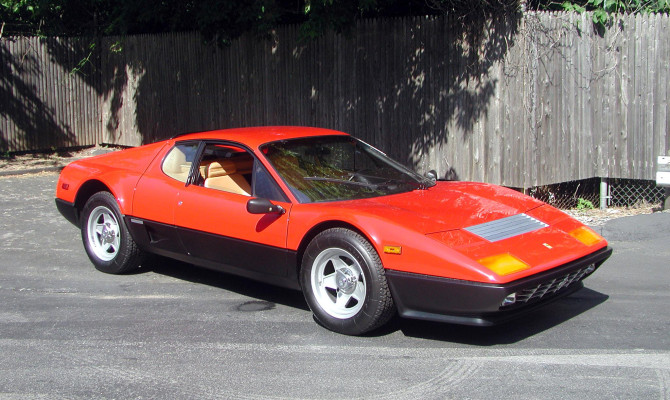
Bringing in this selection of cars from overseas can be a major hassle but as future collectibles, they just might be worth the paperwork.
These five cars never made it to these shores while in production but they can be imported now under recent relaxation of import regulations.
1986-87 Ford Sierra RS Cosworth
Ford lacked the ability to create a truly credible performance car in the U.S. for the duration of the 1980s, yet it seemed to produce a slew of turbocharged, high-performance offspring from its European operations. The crown jewel of the formerly forbidden fruit is the Sierra RS Cosworth. Built to fulfill homologation for Group A rallying, the RS packed a mean punch, banging out 224 horsepower from a Cosworth turbocharged 4-cylinder. The first generation three-door model only saw the production of 5,542 cars. At more than 25 years old, the RS is a prime target for importation.
1973-84 Ferrari Berlinetta Boxer (365 GT4 BB, BB 512)
The Ferrari Testarossa was a favourite here in the late 1980s, but its predecessors, the 365 GT4 BB and BB 512, remained forbidden fruit. Providing the silhouette for the future Testarossa, the Berlinetta Boxers provide connoisseurs of the prancing horse a unique alternative to the car that adorned the walls of every child from 1984 to 1996. With a production run of under 4,000 cars, the Berlinetta Boxer is a guaranteed classic from the hills of Maranello.
1989 Nissan Skyline GT-R
The R32 Nissan GT-R saw the revival of the legendary GT-R, a nameplate that had not been used by Nissan in nearly two decades. Attaining its cult classic status as “Godzilla” was not hard for the GT-R, as the car’s twin turbo 6-cylinder was good for a stock 330 horsepower and tuning houses can easily bring that up to 600 — impressive even by today’s standards. With power going to all four wheels, the GT-R was one of the first super cars to utilize all-wheel drive. Thanks in large part to its starring role in a slew of street-racing movies in the 1990s and 2000s, the GT-R will likely maintain its cult status for years to come.
2010 Porsche 911 Sport Classic
The 997 generation of the Porsche 911 had a smattering of limited edition variants — the Turbo S, the GT3 RS 4.0, the Speedster and the GT2 RS — but none of them is nearly as rare as the Sport Classic. Created to be a limited run of only 250 cars, the Sport Classic is a throwback to the 1970s 911 Carrera RS. The Sport Classic features some of the most beloved options of the original 911s, including a ducktail spoiler, black Fuchs rims, a double-bubble roof and painted racing stripes.
2002-03 Aston Martin DB7 Zagato
Aston Martin revived its DB series in 1994 with the DB7. They perfected it in 2002 with the introduction of the Zagato model at the Paris Auto Show, where it immediately sold out. A fitting homage to the 1960s DB4GT Zagato, the DB7 Zagato rode on a shortened chassis, and was powered by Aston Martin’s new 5.9-liter V-12. The bodywork was a classic Zagato design, and features a double-bubble roof, raised hood and enlarged front grille, an interpretation emulating the beauty of the original masterpiece. Just 99 Zagatos were originally produced, and were only allocated for sale in Europe, Asia, and Britain. The Zagato body DB7 is bound to be a future collectible.
Grant Stoecker writes for Hagerty Insurance. Hagerty is the world’s leading specialist provider of classic car and boat insurance. Learn more at hagerty.ca.
Matt Lewis writes for Hagerty Insurance. Hagerty is the world’s leading specialist provider of classic car and boat insurance. Learn more at hagerty.ca.
“For someone learning to be a better winter driver, having appropriate tires, a mechanically sound vehicle and the right teachers will certainly increase confidence…”
Mecaglisse, Quebec.
Whatever your craft or hobby of choice is, having the right tools to execute your activities is paramount.
As an avid scrapbooker, I couldn’t imagine my life without a sharp pair of scissors, photos, flashy paper and double-sided tape. If you’re a runner, proper footwear mitigates injuries and minimizes blisters.
For someone learning to be a better winter driver, having appropriate tires, a mechanically sound vehicle and the right teachers will certainly increase confidence in slippery situations.
Enter Porsche’s Camp4: a winter driving program available to everyone. It’s an event I’ve attended before and learned a lot from.
But what’s it like for someone who’s already considered a professional driver? – BC resident Scott Hargrove is well versed in racing. He joined our group of international journalists on the program.
At 20 years old, he’s the current GT3 Porsche Cup Challenge champion in Canada. He also took home second place in the Pro Mazda Championship Presented by Cooper Tires. That was just his 2014 race year. His résumé is impressive and he knows a thing or two about car control. Then again, we can all learn something new, no matter how good we are.
“Driving on snow and ice is extremely different to any situation I have been in before,” remarks Scott.
“The technique is completely different compared to racing on pavement, where the fastest way around the track is the smoothest. On snow and ice, it’s all about pitching the car sideways and using the throttle to execute the turn. So despite my extensive racing background, this was a whole new experience for me with a whole new learning curve.”
Each Porsche at Camp4, whether it be a Cayman, Carrera, rear or all-wheel drive, were equipped with Nokian 1.5mm studded tires.
Yes, we needed grip but we also wanted to slide these amazing machines sideways!
As the group is having the time of our lives, the purpose of the activities is to connect with the car and feel how the ice track beneath us is ever changing. Each lap brings new challenges – sometimes it got so slippery our only option was to spin out – or as the instructors would say, “we’d run out of talent!”
The unnerving feeling – exhilarating in most cases – of pitching a car into a corner and holding the slide leaves you with a real sense of accomplishment. Or left me wanting to become a rally driver.
Underneath the smiling faces is a much more satisfying feeling; the feeling of being more confident in yourself and your abilities to adapt to different environments.
As Scott and I are chatting, I ask why he thinks this kind of training is both good for him and every other driver out there.
“Camp 4 will teach you more about car control over any other form of high performance driving school,” Scott says.
“Being in a low traction environment allows you to slide a car at slow speeds. Drivers can then get a feel for what is like to slide a car, react appropriately and recover. This experience will translate directly to the street and help any driver in an emergency situation.”
Learning to be a better driver and having a lot of fun doing it? Yes, I’m ready for that.
So is Scott.
“I would go back in a heartbeat,” he adds.
“Who wouldn’t love to drive a whole range of Porsches in the snow? It’s an experience you don’t get to have very often and one you definitely don’t want to miss out on!”
Visit http://www.porsche.com/canada-pde/en/yourcamp4/ for more information on Porsche’s Camp4.
By Grant Stoecker
“American automotive manufacturers have made a number of performance cars exclusively for Europe and Australia, but have you ever heard of an African performance car?”
The U.S. and Canada might get a wide variety of unique and exotic cars, but there are a few cars that never made it to our showrooms and appear now only has special imports.
1972 Lancia Stratos HF
The Lancia Stratos HF is a monster of car. In the concept stages, the Stratos was an attempt by Bertone to get its foot in with Lancia, who had previously worked with Pinin Farina for design. The legend states that Bertone re-bodied a Lancia Fulvia and drove it to Lancia’s headquarters. Impressed with the Stratos prototype, Lancia agreed to collaborate with Bertone to create their next generation rally car. The Stratos was built around a Lancia chassis, with a Ferrari Dino engine positioned behind the seats. The rolling chassis was finished off with an aerodynamic body fitted by Bertone. The Lancia would go on to have a legendary career, winning the World Rally Championship from 1974-1976.
1973 Chevrolet Firenza Can Am
American automotive manufacturers have made a number of performance cars exclusively for Europe and Australia, but have you ever heard of an African performance car? Meet the Chevrolet Firenza Can Am, a Euro-American mash-up that was never sold in either of those markets. Built to compete with Ford’s inferior Capri Perana, the Can Am began its existence in Britain as a Vauxhall Firenza frame, which was then shipped straight south to Port Elizabeth, where it was paired with a power train straight out of an American legend — the 1969 Camaro Z/28. With a lightweight body and nearly 300 horsepower, the smell of burning rubber was a no-cost option, and I’m sure there was plenty of that. The car was limited to a run of 100, which were built to satisfy homologation requirements for Argus Production Car series, 30 of which are still known to exist.
1969 Ford Escort RS1600
While the latter part of the 1960s might have been the middle of the Mustang’s heyday, Ford was busy building fast cars all around the world. One of those cars was Ford’s venerable Escort, which was one of the top selling cars in Europe at the time. Of course, Ford engineers weren’t satisfied with a compact coupe with 1.3-litre engine, so they contacted the blokes over at Cosworth and developed the Escort RS1600. While the Cosworth engine may have put out only 113 horsepower, the tiny Escort was barely tipping the scales at 1,800 pounds, making the RS1600 one of the coolest cars cruising the UK at the time.
1969 Nissan Skyline GT-R
The Nissan Skyline GT-R is arguably the most iconic sports car to ever come from the islands of Japan. While the GT-R is most commonly idolized in its mid-’90s guise from the Fast & Furious franchise, our pick is the original — the 1969 Skyline GT-R. Introduced at the 1969 Tokyo Auto Show, the GT-R was a Nissan Skyline sedan that was stripped out and given the special treatment by the boys in the Nissan Skunks Works team. The heart of the GT-R is a Nissan racing V-6 engine putting out 160 horsepower, allowing the GT-R to outrun its European rivals. Other cool upgrades included wide wheel arches, rally wheels, front and rear spoilers, and of course, the now-iconic GT-R badges.
The Porsche 959 is a perfect example of what happens when some German mad scientists in Porsche decide that the 911 Turbo isn’t just quite enough. Built to be the ultimate Group B rally car, Porsche decided to slap an all-wheel drive system and a twin-turbo 2.8-liter boxer engine in a highly modified 911. In order to fulfill the FIA’s homologation rule, Porsche built 337 examples for consumption by the public. Of course, the EPA and Porsche weren’t quite on the same page, and the 959 was never legally sold in the U.S. However, several example of the 959 have made their ways to our shores, most notably the “Gates 959,” which was stored by U.S. Customs for 13 years and was key in the passing of the “Show and Display” law.
Grant Stoecker writes for Hagerty Insurance. Hagerty is the world’s leading specialist provider of classic car and boat insurance. Learn more at hagerty.ca
“More than ten years have passed since the first Sea to Sky highway Cayenne introduction and it is still the handling and performance mid-size champ…”
In 2003, Porsche Cars North America shipped a number of its shiny, new Cayenne SUVs from head office in Atlanta to drive the Sea to Sky highway here in B.C.
The day started with a long explanation as to why the famed sports car maker was getting into the SUV game. History often repeats and here again in 2014, Porsche shipped roughly fifty new Cayenne S and SE Hybrids to the same scenic highway.
This time around there was no explanation as to why this second-generation model exists: the Cayenne currently accounts for roughly fifty present of all Porsche sales.
Looks
When the second generation Cayenne came out in 2011 it was a departure from the previous model. As head of design for the current Cayenne, Ingo Scheinhuette, told me: “Even though the new model was larger than the original, many people thought it looked smaller.” In an effort to make the new 2015 facelift look more masculine, the goal was to make the Cayenne look more planted and wider. To do this, the entire front end, including the front bumper, grille, headlights, and front fenders have a more polished look. The daytime running lights have four LED marker lights that are also mimicked in the tail lamps, plus bi-xenon lamps are now standard. The front air intakes are wider and the hood looks more integrated into the design. Around the back, the rear window spoiler, hatch, bumper and exhaust tips are all new. The lights are more sculpted, the bumper has been raised and widened and the exhaust tips now pop through the lower valance. If the goal was to make the Cayenne more masculine, mission accomplished.
Inside
What hasn’t changed, thankfully, is the interior. Three minor changes include a three-point sports steering wheel as standard equipment across the entire Cayenne line that includes paddle shifters and heat. The other changes include standard navigation and a slightly more sculpted rear seat. The rest of the interior is pure automotive perfection. The level of fit and finish has yet to be surpassed in this class and the logical multi-button layout looks intimidating at first but is easy to master after a few days. What Porsche has done in the industry is move the needle on what is expected in premium products. In many ways, the competition looks frumpy and rather dated, even after four years on the market, the Cayenne is still fresh.
Drive
With pressure on automakers to improve fuel economy and lower their carbon footprint, this latest 2015 Cayenne receives two new S models. The base S used to be fitted with a V8 engine, now a smaller 3.6L V6 with two turbocharges helps to produce an extra 20hp but saves fuel. This is the same engine that is used in the smaller Porsche Macan Turbo. Accelerating up through the mountains was a snap but the sound from the engine and interior vibration isn’t as smooth as the old V8. The second new drive system is the plug-in SE-Hybrid that can run on pure electric power up to 30kms before the supercharged Audi-derived 3.0L gasoline V6 kicks in. This model can run on the 95hp electric motor alone, for greatest efficiency, or the electric motor can be used for additional punch for spirited moves. The combined output is 416hp and 435 lb.-ft. of torque. This is the very first plug-in hybrid in this class of vehicle. Last year the Porsche Panamera sedan came equipped with this system and accounted for roughly 11 percent of overall sales but that was a rear wheel drive only car, this Cayenne is all wheel drive, which should appeal to more buyers.
Verdict
The greatest challenge for the SE-Hybrid is the already practical and thrifty diesel Cayenne that delivers nearly as much torque and fantastic economy. Nothing can compete with pure electric driving for carbon reduction but it comes at a cost. The SE-Hybrid starts at $86,800 and the Diesel starts at $71,330, which leaves a ton of extra cash left over for those costly Porsche options. The new turbo V6 equipped Cayenne S now starts at $83,700, which poses a problem for buyers of the $82,200 Macan Turbo. Both start at roughly the same price but the Cayenne comes with boatloads more interior space, 20 more horsepower and the same Porsche crest on the hood. The smart money is on the Cayenne over the rather cramped Macan, there is actually room for the family dog in the back.
More than ten years have passed since the first Sea to Sky highway Cayenne introduction and it is still the handling and performance mid-size champ. Now with more features, a sumptuous cabin and efficient power to spare.
Contact: zack [dot] spencer [at] drivewaybc [dot] ca
The Lowdown
Power: 3.6L turbo V6 with 420hp or 416hp hybrid.
Fill-up: Hybrid can run up to 30km on pure electric power.
Sticker price: $33,700-$86,800
The classic car world is possibly one of the most opinionated collecting pursuits known to man, and nearly everyone seems to have an opinion on relative values and desirability.
Each car on the list has at one time or another been deemed by “experts” to be hopeless as a collectible and each has one thing in common – they’ve skyrocketed in value.
1956-58 Studebaker Golden Hawk
Poor Studebaker, the cars of the ill-fated favorite son of South Bend, Ind., never seemed to get the same love from collectors as the cars of the Big Three. But they may be getting the last laugh. (more…)
“Same-day, back-to-back vehicle category assessments are performed, using both specially prepared evaluation courses and on public roads…” (more…)
Bad things often happen to good cars in the movies.
Here are five that make car lovers squirm.
1961 Ferrari 250 GT California Spyder (Ferris Bueller’s Day Off)
This scene is perhaps the most famous bit of classic car mayhem in all of moviedom. In it, the Ferrari is seen placed on jack stands running in reverse in a hilariously stupid attempt to remove the miles that had been put on the car during the day’s class-cutting good fun in Chicago. In a fit of frustration directed at his misplaced-priorities jerk of a father, Cameron Frye (Alan Ruck) accidentally kicks the car off the jack stands and it sails out of its glass enclosure into the woods below. Happily, as you’ll read with the Miura and the Aston below, it wasn’t a real California Spyder.
1970 Dodge Challenger (Vanishing Point)
The ’70 Dodge Challenger (one of about five used for the film) meets a fiery end when the protagonist of the film (played by Barry Newman) drives it into a bulldozer being used as a police road block.
1967 Lamborghini Miura P400 (The Italian Job)
The Miura is probably the most beautiful mid-engine sports cars of all time. And that’s what makes this scene so hard to watch. In the opening scene of the movie, mobsters destroy heist-plotter Roger Beckerman’s (Rossano Brazzi) Miura with a backhoe and push it over a cliff. A small consolation is the fact that an actual intact Miura wasn’t destroyed. Just body panels over an empty accident-bent chassis. Interestingly, when the producers went to clean up the mess the next day, the remains had disappeared. Neither the chassis tag nor any of the pieces have surfaced to this day.
1979 Porsche 930 (Caddyshack)
This scene is an object lesson as to why you should never park your car with the sunroof open within a half-mile radius of where alcohol is being served: Young Spalding Smails, suffering from a case of ‘affluenza’ combined with Johnny Walker, staggers up to Dr. Beeper’s parked 930 and empties the contents of his upper GI tract into the open sunroof. The squishy sound-effect of Beeper sliding into the seat never fails to make one cringe.
1979 Porsche 928 (Risky Business)
This scene reminds us all why we should use the hand brake. Those of us who are old enough to have seen this in theatres didn’t see this one coming: Tom Cruise is enjoying a night out with the typical Pretty Woman-like, non-drug addicted hooker (played by Rebecca de Mornay) of which Hollywood is so fond. Her handbag strap pulls the gear shifter into neutral as she’s exiting the car. It rolls down a hill heading toward Lake Michigan with Cruise on the hood in a futile attempt to arrest the forward motion of the 3,800-pound 928. It ultimately comes to a stop at the edge of a wooden pier. Just as Cruise breathes a sigh of relief and starts to make his way to the driver’s door, the entire pier collapses, taking Cruise and the car for a swim in the lake. Audiences everywhere gasped audibly. The scene at the dealership where the service manager enters the waiting rooms and asks, “Which one of you is the U-Boat commander?” is priceless.
**********
Rob Sass is the vice-president of content for Hagerty Insurance. Hagerty is the world’s leading specialist provider of classic car and boat insurance. Learn more at hagerty.ca and you can email rsass [at] hagerty [dot] com
“I love the way the Macan looks, the interior is wonderful and the handling can be very sporty if the buyer chooses.”
When the Porsche Cayenne was introduced, I questioned why the iconic sports car maker would build a grocery-getting SUV.
Boy, was I ever wrong. Porsche was not only successful introduced the Cayenne, it went into become its best-selling vehicle and – wait for it – I even bought one! So, with the latest introduction of a smaller SUV called Macan, there is less fanfare around the fact that it actually exists and more excitement about how it performs.
The bigger question is, with so many small luxury SUVs entering the market, is the Macan worth the $54,300 to get a base model or $82,200 for the turbo?
Looks
The Macan uses same platform as the Audi Q5, a Volkswagen Group sibling, but features an entirely different body shell and engine options. The most striking design element is the wide hood that folds over the side of the front fenders, making a seamless, wide stance that is impressive. The hood actually has cutouts for the headlamps and weighs only 17kg. “Side Blades” decorate the lower body of the Macan and can be ordered in black, a matching body colour or carbon fibre. The back end of the Macan is particularly sleek and tidy, the taillights wrap around from the side and into the tailgate with precession. It’s the lack of a trunk release that makes the design so pleasing. Instead, a small button on the base of the windshield wiper that electronically releases the power tailgate. Below the tailgate four exhaust tips tell passersby that this is a powerful machine.
Inside
What the Macan has over the Q5 is a level of interior refinement that is almost unmatched in the car business. It’s finished with fine leather and a simple design that makes interacting with his SUV a joy. There are several drawbacks though. The cargo area is long but the rake of the rear window limits taking larger objects inside the car. The back seat I find too small for a family of four people. Since I own a Cayenne, I have a great perspective on the amount of room this Macan offers. Legroom is obviously tighter, headroom is just okay, it is the lack of space side-to-side that I find limiting. The Cayenne is a perfect family choice, the Macan I believe is suited for a single person or active professional couple. Not to say it couldn’t be use for family duty, it just wouldn’t be my choice.
Drive
The launch of the Macan in California provided a route that carved through the mountains outside of Los Angeles on the way to Willow Springs racetrack. Porsche always holds its events at a racecourse, proof that they believe they have something in this new SUV. There might be some confusion surrounding the naming of this car. Both the Macan S and Macan Turbo both come fitted with a V6 turbo. The base model is a 3.0L V6 with 340hp. The “Turbo” gets a larger 3.6L V6 with a higher output turbocharger and is rated at 400hp. The base model would be my choice. Driving in back country roads the power was fantastic and the additional money could be spent upgrading the suspension from the base steel springs to steel with Porsche Active Suspension Management (PASM) that allows the driver to set the firmness of the ride. This upgrade was noticeable on the track. The turbo comes standard with this setup but the added power and expense was only really noticeable when the Macan was pushed very hard around the racetrack. For regular commuting the S is just fine.
Verdict
I love the way the Macan looks, the interior is wonderful and the handling can be very sporty if the buyer chooses. Here is the issue; the Macan can get very expensive in a hurry. All of the cars I drove in California were over $100,000 with features like PASM, additional air suspension and sport-chrono settings for the 7-speed duel clutch automatic. When I configure a base S with the features I would want like navigation, PASM, front and rear parking sensors, bigger wheels, Bose stereo and a few other odds and ends, comes to almost $75,000, never mind the $82,200 starting price of the turbo.
Having recently driven the spectacular Audi SQ5, from which this car is based, that 354hp rocket is a bargain at $60,000, almost fully equipped. I like the Macan, and they will sell every one to people who want to have the latest, but I think the pricing structure is a bit over the top.
Contact: zack [dot] spencer [at] drivewaybc [dot] ca
The Lowdown
Power: 3.0L Turbo V6 with 340 or 3.6L Turbo V6 with 400hp
Fill-up: N/A
Sticker price: $54,300-$82,200
In this age of ultra-short product lifecycles where a three-model-year run unchanged is an eternity, it’s tough to imagine the same basic design being produced for three separate decades or more.
Here are six cars that all had tortoise-like life spans:
1962-80 MGB
The MG was the sports car North Americans loved first, with U.S. servicemen bringing back rakish MG TCs from the UK. The MGB was the first “modern” sports car from MG that included features like actual roll-up windows and (from 1967 on) a fully synchronized manual transmission. When it was introduced in 1962, few thought that it would be the last MG sold in the U.S. Sadly, that’s how it turned out. After a titanic 18-year run, the B exited the world little changed from the way it entered. The engine and body shell were the same basic units that were being built during the Kennedy administration.
1954-83 Jeep CJ-5
The CJ-5 was actually a variant of the Korean War-era military Jeep. Far more suited to civilian use than the WWII-era Jeep, the CJ-5 was a hot seller for American Motors, which took over Jeep’s parentage from the old Kaiser automotive group. The CJ-5’s short wheelbase gave it a terribly choppy ride and made it rollover-prone in emergencies. Nevertheless, it remained in production for an astonishing 30 years, and there is a fair amount of CJ DNA in today’s Wrangler.
1949-80 Volkswagen Beetle
For a car that was a virtual orphan cast-off at the end of WWII, the Beetle wound up doing OK. The Allied occupying powers didn’t quite know what they should do with the car, which was commissioned by the Nazis to give loyal subjects mobility on the new Autobahn superhighways. They elected to let the post-war Germans keep the funny little car, and the rest is history. Although the last Super Beetle Cabriolets were sold in the U.S. from 1980-81, production of the basic Beetle sedan continued in Mexico until 2006.
1964-89 Porsche 911 (air-cooled)
The 911 celebrated its 50th anniversary recently, but to be fair, we cut this off in 1989, the last year for the original torsion-bar suspension, air-cooled 911. It’s simply amazing how little of the basic car changed over the course of 25 years, from the primitive heating system, to most of the glass, roof and doors, as well as the basic engine design. 911 fans seemed just fine with that as the car outlived its intended successor – the 928.
1968-82 C3 Corvette
Corvettes through their history had been on a somewhat fast and furious development pace ever since Zora Arkus-Duntov decided to show Chevy how to make it into a real V-8-powered sports car in 1955. The second generation, or C2, Corvette (which many argue was the best of the classic Corvettes) was only around from 1963-67. The car that replaced that version, however, hung around for 14 long years. To be fair, these were tough years for GM, which was hammered by imports and two fuel crises. There were several mid-engine design studies that came perilously close to replacing the C3, but it never happened, and the same basic design lasted from LBJ to Reagan.
1960-82 Checker Marathon
One of the few purpose-built taxi cabs ever sold in the U.S., they were infinitely nicer to ride in than the clapped-out Ford Crown Vics that seem to serve as cabs everywhere in the U.S. Similar in roominess to the classic London taxis still in service, with their handy fold-down jump seats, the Marathon also added a useful trunk to the mix. Although the vast majority were used as cabs, ultra-practical eccentrics did from time to time buy Marathons as civilian transportation. Twenty-two years wasn’t long enough.
Rob Sass is the vice-president of content for Hagerty Insurance. Hagerty is the world’s leading specialist provider of classic car and boat insurance. Learn more at hagerty.ca and you can email rsass [at] hagerty [dot] com
French Open winner Maria Sharapova was driven to the glamorous Women’s Tennis Association (WTA) Pre-Wimbledon Party in the Porsche 918 Spyder – the Stuttgart marque’s fastest, most powerful production car to date, and one of the lowest-emitters of CO2 of any class of car.
Fresh from his drive in the Le Mans 24 Hours race, Sharapova’s chauffeur for the night was Porsche factory ‘works’ driver, Mark Webber, complete in smart chauffeur attire.
Sharapova, a Porsche Ambassador, was collected from The Goring Hotel in Belgravia and driven by Webber to the prestigious event at Kensington Roof Gardens in West London.
Being driven in the most powerful Porsche road car to date, by arguably the world’s fastest chauffeur, was an experience savoured by Sharapova. Speaking about the drive, she commented: “What a fantastic way to arrive at the party. To be in the fastest Porsche with a racing driver like Mark is amazing. And it’s great also to be driving in a city like London running only on electric power – it’s an unbelievable car!”
Webber was equally impressed by the car. The Porsche World Endurance Championship driver said: “Having just driven the Porsche 919 Hybrid race car at Le Mans last weekend, I already know that this technology can produce incredible results. The 918 Spyder is the closest thing to a road-going version, and it’s just as amazing – especially as it can be driven into London for free. And of course it’s great fun to drive Maria around in it!”
The 918 Spyder has a mid-mounted 4.6-litre V8 race engine coupled to two electric motors with lithium-ion batteries. It is a remarkable plug-in hybrid super sports car that can reach a top speed of 344 km/h, sprint from zero to 100km/h in 2.5 seconds, and yet at 72 g/km (70 g/km with the lightweight Weissach Package) produces so little CO2 that it is exempt from the London Congestion Charge.
It has a total power output of 887 hp and holds the current lap record for a production car at the famous Nürburgring race circuit of just 6 minutes 57 seconds. Despite all that performance, its plug-in hybrid technology means a low fuel consumption of 3.0 L/100kms is possible.
Recent Comments
- { Enjoyed your Forest of Bowland in the BMW X5M, particularly the photo of the BMW in front of the main part of Stonyhurst College where... }
- { Bantam designed the Jeep, not Willy's or Ford. The American military gave the original Bantam prototype to Willys and Ford to copy. There is plenty... }
- { All Escalades come with a 6.2-lilter V8 engine that produces 420 horsepower. A six-speed automatic is the only transmission offered and drives the rear wheels.... }
- { Alexandra is an excellent journalist. }
Popular Posts
- Journey to a ‘Sparkling’ Luxury Okanagan Resort “Four lucky readers will put a Dodge Journey’s weekend-...
- The Need For Speed: Hike Those Highway Limits More than half of those polled believe the province sho...
- Drives-U-Crazy… Erratic drivers. An early morning drive from Kelowna to Vancouver is nor...
- Readers Respond: The Pros and Cons of Increasing B.C. Speed Limits Increasing the speed limits will only increase risk to...
- Honda CR-V Review: The Compact Crossover To Get Things Done The CRV is a very stylish and aerodynamic crossover veh...


